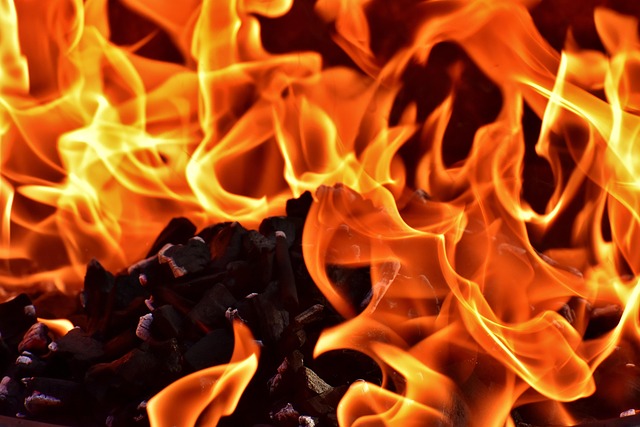Smoke damage assessment is crucial for California homeowners selling fire-damaged properties, guiding repairs and ensuring fair compensation. Adhering to legal guidelines, including building codes and disclosure requirements, is essential. A detailed inspection identifies damage, with professionals using specialized equipment and tests. Restoration plans prioritize repairs, cleaning, or replacement based on severity and value. Effective steps include swift assessment, visible repairs, repainting, and proper ventilation to maximize resale value and attract buyers in the California market.
“After a fire, assessing and repairing smoke damage is crucial for safely selling your California home. This comprehensive guide, ‘Understanding Smoke Damage Assessment,’ navigates legal considerations unique to California’s real estate market post-fire. We’ll walk you through the steps involved in assessing and repairing damage, empowering you with expert tips to maximize your home’s resale value. Whether you’re a homeowner facing this challenge or a buyer navigating the process, these insights are invaluable for successfully selling a fire-damaged property in California.”
- Understanding Smoke Damage Assessment: A Comprehensive Guide
- Legal and Safety Considerations for Selling a Fire-Damaged Home in California
- The Steps Involved in Assessing and Repairing Smoke Damage
- Maximizing Your Home's Resale Value After Fire Damage: Tips from Experts
Understanding Smoke Damage Assessment: A Comprehensive Guide

Smoke damage assessment is a crucial step in the aftermath of a fire, especially for homeowners looking to sell their property in California. Understanding this process is essential for navigating the challenges that come with fire damage and ensuring fair compensation. It involves a thorough inspection to identify not just visible charring and ash but also subtle indicators of smoke infiltration, such as odor, residue, and structural changes.
This assessment determines the extent of repair needed, from surface cleaning to extensive rebuilding. For those planning to sell, it’s a vital step in understanding the market value post-repair. A comprehensive report from a qualified assessor can help negotiate with insurance providers and potential buyers, ensuring you get the best deal when selling your home affected by fire damage in California.
Legal and Safety Considerations for Selling a Fire-Damaged Home in California

When selling a home damaged by smoke in California, understanding legal and safety considerations is paramount. The state has stringent building codes and regulations aimed at ensuring the well-being of future occupants. Before placing your property on the market, it’s crucial to assess any structural or health hazards caused by smoke damage. This may involve professional inspections to verify that the home meets safety standards and identifies necessary repairs. Failure to address these issues could lead to legal complications and financial losses for prospective buyers.
California law requires disclosure of known material defects, including fire and smoke damage. Sellers must provide comprehensive information about the extent of the damage and any ongoing remediation efforts. Transparency builds trust with potential buyers and helps avoid disputes down the line. It’s also important to consult with a real estate professional experienced in handling such situations to ensure compliance with local regulations and maximize the home’s resale value despite the fire-related damage.
The Steps Involved in Assessing and Repairing Smoke Damage

Assessing smoke damage is a crucial step before repairing any fire-related harm, especially when considering how do I sell my home due to fire damage California. The process begins with a thorough inspection, where professionals identify affected areas and assess the extent of contamination. This includes examining surfaces, checking for odour, and using specialized equipment to detect smoke particles or residues. Once identified, items like furniture, carpets, and walls may require testing for smoke and soot residue to determine if they are salvageable or need replacement.
After the assessment, a restoration plan is developed. This involves prioritizing repairs, cleaning, or replacing damaged items based on severity and value. For homes, this could mean repairing or replacing structural components, decontaminating air systems, and restoring or removing contaminated furnishings. It’s important to work with experienced professionals who can guide you through the process, especially when navigating how do I sell my home due to fire damage California, ensuring your property is restored safely and effectively.
Maximizing Your Home's Resale Value After Fire Damage: Tips from Experts

After a fire, assessing and repairing smoke damage is crucial for restoring your California home to its pre-loss condition—or even better. This process not only ensures structural integrity but also maximizes the resale value of your property. Experts recommend starting with a thorough inspection to identify affected areas, from walls and ceilings to flooring and fixtures. Addressing these issues promptly will prevent further damage and attract potential buyers.
When preparing to sell, focus on visible repairs and restoration. Replacing or cleaning smoke-damaged items can significantly impact buyer perception. Consider repainting with neutral colors, which can make spaces appear larger and fresher. Additionally, keeping the air fresh by ensuring proper ventilation during the repair process will be noticed by prospective buyers, demonstrating your commitment to maintaining a healthy living environment.
Smoke damage assessment is a crucial step in navigating the complexities of selling a fire-damaged home in California. By understanding legal and safety considerations, following expert-recommended repair processes, and implementing strategic tips for maximizing resale value, homeowners can transform their property from a challenge into an opportunity. If you’re ready to sell your California home after fire damage, these comprehensive guides provide the necessary tools and insights to ensure a successful transition.






